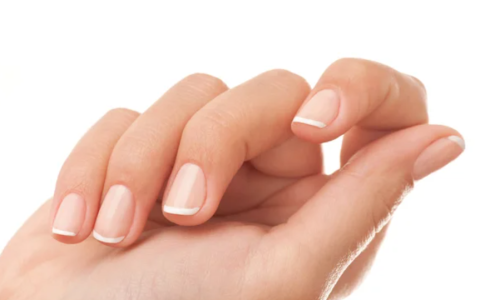This Surprising Fingernail Clue Might Predict Your Lifespan, Says Top Longevity Expert—Find Out Now!
By
- Replies 10
As we age, we often look for signs that can give us clues about our health and longevity. It turns out one of these indicators might be right at our fingertips—literally. According to Dr. David Sinclair, a renowned longevity expert and geneticist at Harvard Medical School, the rate at which your fingernails grow could be a window into your biological age and, potentially, your lifespan.
In the world of anti-aging research, Dr. Sinclair is a prominent figure, and his insights into the aging process are closely followed by those interested in extending their health span. On his podcast, Lifespan, Dr. Sinclair discussed how nail health is a reflection of the body's ability to generate new, healthy cells. Faster nail growth suggests a more robust cell regeneration process, which could mean better protection against age-related decline.
Biological age, as opposed to chronological age, is a measure of how well the cells and tissues in your body function. While chronological age is simply the number of years you've lived, biological age can vary significantly based on lifestyle, genetics, and environmental factors.
Dr. Sinclair referenced a study from 1979 that might not be fresh off the press but still holds fascinating insights. In this study, researchers attached tiny measuring tapes to participants' fingernails and tracked their growth over time. They observed that the weekly growth rate of fingernails tends to slow by about 0.5 per cent each year after the age of 30. If your nails are growing faster than this average, it could indicate that you're aging more slowly than your peers.
The longevity expert also shared a personal anecdote, revealing that he pays attention to his own nail growth as a gauge of his aging process. 'Every time I have to cut my nails, I'm thinking, how long ago did I cut my nails?' he said. This self-monitoring might seem trivial, but it's grounded in the science of aging.
Factors influencing nail growth include blood circulation, which can slow down as we age, reducing the supply of nutrients necessary for nail growth. The diet also plays a role; deficiencies in vitamins and minerals can lead to slower nail growth. Hormonal changes during puberty and pregnancy can cause spikes in nail growth while aging typically leads to a gradual slowdown.
Beyond growth rate, the appearance of your fingernails can signal various health issues. For instance, nail ridges are common in older adults as cell production slows down, but in younger individuals, they could indicate health problems such as diabetes or nutrient deficiencies. Changes in nail colour, such as white spots or red lines, can also point to dietary gaps or more serious conditions like melanoma.
It's important to note that while Dr. Sinclair's observations are intriguing, they are not a definitive measure of one's lifespan. Nails can indeed reflect underlying health conditions, but they are just one piece of a much larger puzzle. If you notice significant changes in your nails, it's wise to consult a healthcare professional.
Lastly, while Dr Sinclair is a respected authority in the field of genetics and aging, it's worth mentioning that he has faced criticism for promoting an anti-aging pill for dogs, which led to controversy and resignations from the research body he founded. As with all scientific research, it's crucial to approach new findings with a healthy dose of scepticism and to rely on peer-reviewed studies and medical advice.
 So, next time you're clipping your nails, take a moment to consider what they might be telling you about your health and aging process. And remember, while we can't stop the clock, we can certainly take steps to ensure that our golden years are as vibrant and healthy as possible. What do you think about this fingernail clue? Have you noticed changes in your nail growth as you've aged? Share your thoughts and experiences with us in the comments below!
So, next time you're clipping your nails, take a moment to consider what they might be telling you about your health and aging process. And remember, while we can't stop the clock, we can certainly take steps to ensure that our golden years are as vibrant and healthy as possible. What do you think about this fingernail clue? Have you noticed changes in your nail growth as you've aged? Share your thoughts and experiences with us in the comments below!
In the world of anti-aging research, Dr. Sinclair is a prominent figure, and his insights into the aging process are closely followed by those interested in extending their health span. On his podcast, Lifespan, Dr. Sinclair discussed how nail health is a reflection of the body's ability to generate new, healthy cells. Faster nail growth suggests a more robust cell regeneration process, which could mean better protection against age-related decline.
Biological age, as opposed to chronological age, is a measure of how well the cells and tissues in your body function. While chronological age is simply the number of years you've lived, biological age can vary significantly based on lifestyle, genetics, and environmental factors.
Dr. Sinclair referenced a study from 1979 that might not be fresh off the press but still holds fascinating insights. In this study, researchers attached tiny measuring tapes to participants' fingernails and tracked their growth over time. They observed that the weekly growth rate of fingernails tends to slow by about 0.5 per cent each year after the age of 30. If your nails are growing faster than this average, it could indicate that you're aging more slowly than your peers.
The longevity expert also shared a personal anecdote, revealing that he pays attention to his own nail growth as a gauge of his aging process. 'Every time I have to cut my nails, I'm thinking, how long ago did I cut my nails?' he said. This self-monitoring might seem trivial, but it's grounded in the science of aging.
Factors influencing nail growth include blood circulation, which can slow down as we age, reducing the supply of nutrients necessary for nail growth. The diet also plays a role; deficiencies in vitamins and minerals can lead to slower nail growth. Hormonal changes during puberty and pregnancy can cause spikes in nail growth while aging typically leads to a gradual slowdown.
Beyond growth rate, the appearance of your fingernails can signal various health issues. For instance, nail ridges are common in older adults as cell production slows down, but in younger individuals, they could indicate health problems such as diabetes or nutrient deficiencies. Changes in nail colour, such as white spots or red lines, can also point to dietary gaps or more serious conditions like melanoma.
It's important to note that while Dr. Sinclair's observations are intriguing, they are not a definitive measure of one's lifespan. Nails can indeed reflect underlying health conditions, but they are just one piece of a much larger puzzle. If you notice significant changes in your nails, it's wise to consult a healthcare professional.
Lastly, while Dr Sinclair is a respected authority in the field of genetics and aging, it's worth mentioning that he has faced criticism for promoting an anti-aging pill for dogs, which led to controversy and resignations from the research body he founded. As with all scientific research, it's crucial to approach new findings with a healthy dose of scepticism and to rely on peer-reviewed studies and medical advice.
Key Takeaways
- Dr David Sinclair, a Harvard Medical School genetics expert, suggests that the rate of fingernail growth might indicate biological age and potentially lifespan.
- A historic study referenced by Dr Sinclair found that the weekly growth rate of fingernails slows by about 0.5 per cent per year after age 30, indicating that faster-than-average nail growth may suggest slower aging.
- Nail health, including growth rate, can be influenced by blood circulation, diet, hormonal changes, and other health factors.
- Changes in the appearance of nails, such as ridges, white spots, or clubbing, can be indicators of health issues, which is why it is crucial to monitor any changes in nail shape or colour.








